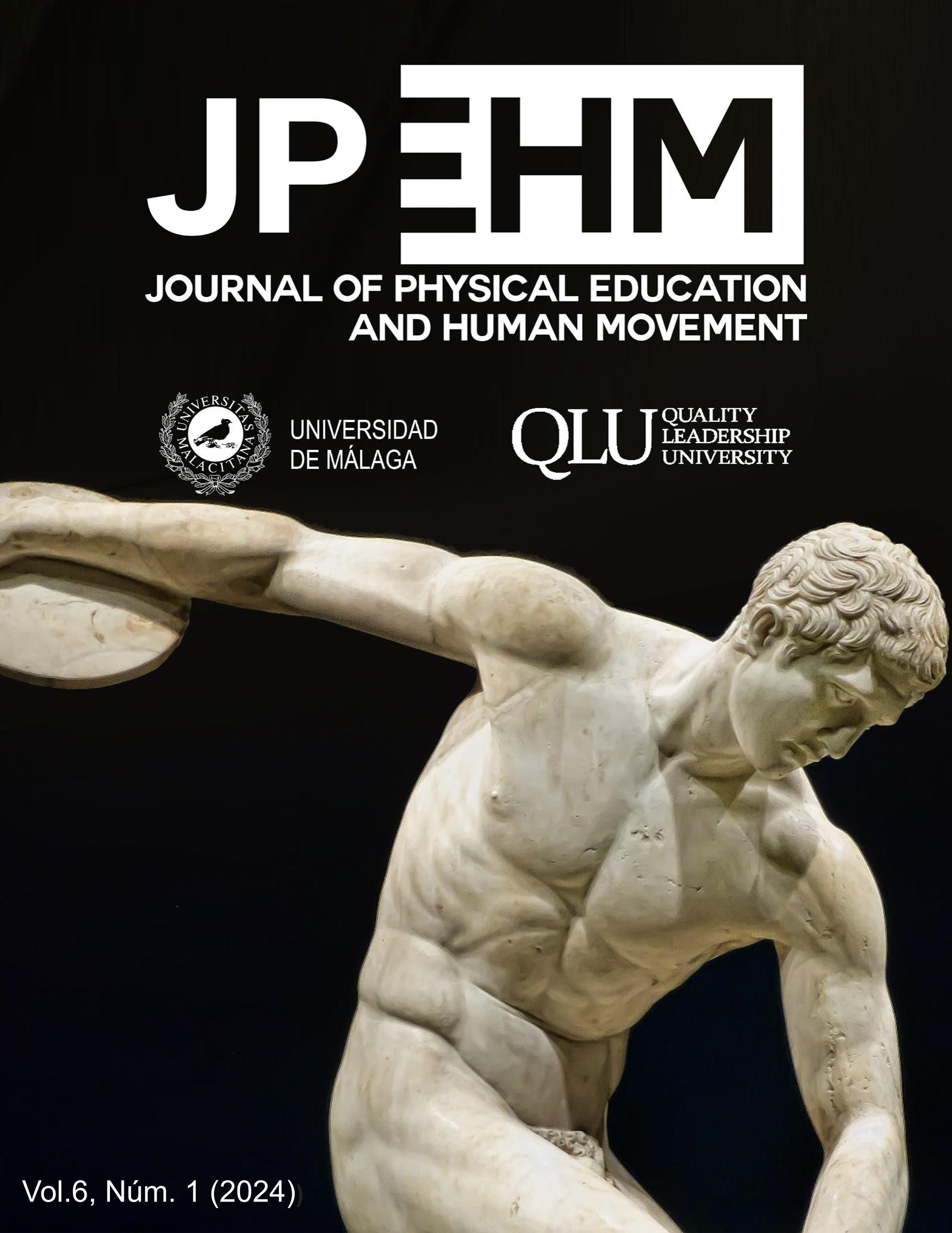The position of diplomacy in Iranian sports
DOI:
https://doi.org/10.24310/jpehm.6.1.2024.17766Keywords:
strategy, international relations, sports management, IranAbstract
Sports diplomacy is a pervasive phenomenon that at the diplomatic level is one of the most important components of communication between countries and nations, and therefore it is important to know what is the position of Iran, as a powerful country in the field of diplomacy in this area. The purpose of this study was to investigate the position of diplomacy in Iranian sports. The research method was descriptive-analytical and applied in terms of purpose. The statistical population of the study was all political-sports managers and experts in the field of sports diplomacy who were selected by purposive and accessible sampling. The data collection method included library studies, semi-structured interviews with experts and finally the Delphi method in three stages. In order to identify the strategic position, the Internal Factor Evaluation Matrix (IFE) and the External Factor Evaluation Matrix (EFE) were used. The results showed that the position of Iranian sports diplomacy is in the position of WO (conservative strategy). In this regard, it is concluded that high-level officials and policymakers in the Ministry of Sports, the Ministry of Foreign Affairs and other relevant institutions should focus their plans on addressing weaknesses and taking advantage of existing opportunities.
Downloads
Metrics
References
Ahmadi, F., Nasiriani, Kh., Abazari, P. (2008). Delphi technique: a tool in research. Iranian Journal of Medical Education, 8 (1):175-185. https://ijme.mui.ac.ir/article-1-790-fa.pdf
Australian Government. 2017. 2017 Foreign Policy White Paper. https:// www. dfat. gov. au/ sites/ defau lt/ files/ minis ite/ static/ 4ca08 13c- 585e- 4fe1- 86eb- de665 e6500 1a/ fpwhi tepap er/ index. html.
Badeei Nameghi, S. F., Falah, Z., Behlekeh, T., & askari, A. (2023). Comparison of the problems of sports tourism tours in domestic and foreign events. Strategic Studies on Youth and Sports, 22(61), 649-662. doi: 10.22034/ssys.2022.1958.2389
Bakhshi chenari, A. R., godarzi, M., sajjadi, S. N., & Jalali Farahani, M. (2021). Identify and Prioritize the Effective Factors of Sport Diplomacy Development in Islamic Republic of Iran’s Foreign Policy. Sport Management and Development, 10(1), 130-140. doi: 10.22124/jsmd.2021.5046
Bergsgard, N,. Houlihan, B,. Mangset, P , Nodland, S., Rommetvedt, H. (2007), Sport Policy: a Comparative Analysis of Stability and Change", First Edit, Burlington: Elsevier and Book Aid International. https://scholar.sun.ac.za/server/api/core/bitstreams/307eb371-f722-4e43-85e2-8c40d0d9cb52/content
Costa, A. (2005). “The Status and Future of Sport Management: A Delphi Study”. Journal Sport Management. Human Kinetics, 16(3), 117-142. DOI: https://doi.org/10.1123/jsm.19.2.117
Eden, J,T. (2013), Soccer and International Relations: Can Soccer Improve International Relations?, Ottawa: University of Ottawa. https://ruor.uottawa.ca/server/api/core/bitstreams/89fe9319-50d6-4959-87ca-3a764726062f/content
Gachi, A., Ghafouri, F., & Kargar, G. (2023). Comparison of the Role of Macro, Mid and Micro Level Factors of Management in the Development of Championship Sport. Strategic Studies on Youth and Sports, 22(61), 277-296. doi: 10.22034/ssys.2022.1263.1874
Ghasemi, H., Farahani, A., Shakarami, Z., & Hoseini, S. S. (2013). Content analysis of sports programs with emphasis on state television coverage of women's sport. Communication Management in Sport Media, 1(2), 23-30. https://sportmedia.journals.pnu.ac.ir/article_586.html?lang=en
Khabiri, M., & Fattahi Zadeh, A. (2019). Sports Diplomacy: Acceptance and Encompassing of A Political Strategic Concept. Strategic Studies on Youth and Sports, 18(43), 143-164. https://faslname.msy.gov.ir/article_301.html
Min, D., & Choi, Y. (2018). Sport cooperation in divided Korea: an overstated role of sport diplomacy in South Korea. Sport in Society. 22. 1-15. 10.1080/17430437.2018.1536120.
Murray, S. (2012). The Two Halves of Sports-Diplomacy. Diplomacy and Statecraft, 23(3), 576-592. https://doi.org/10.1080/09592296.2012.706544
Murray, S. (2013). Sports diplomacy in the Australian context: A case study of the Department of Foreign Affairs and Trade. Sports Law eJournal, 18, 1-15. https://slej.scholasticahq.com/article/6399
Qingmin, Z. (2013). Sports diplomacy: The Chinese experience and perspective. The Hague Journal of Diplomacy 8 (2013) 211-233. https://www.sis.pku.edu.cn/teachers/docs/20190904131145743178.pdf
Republika, S., Ministerstvo, Z., Zunaje, Z.(2021). Slovenia: Safe, Successful, Globally Respected. Foreign Policy of the Republic of Slovenia, https:// www. gov. si/ assets/ minis trstva/ MZZ/ Dokum enti/ stiki-z- javno stmi/ Forei gn- Policy- Strat egy- ofthe- Repub lic- of- Slove nia. pdf. Accessed 2 Aug 2022.
Vojdani tabatabaie, I. S., mohamadian, F., & nobakht ramezani, Z. (2023). analyze political behavior in sports organizations. Strategic Studies on Youth and Sports, 22(61), 225-238. doi: 10.22034/ssys.2022.1724.2222
Woodward, R. (2020). Sport and UK Soft Power: The Case of Mount Everest. The British Journal of Politics and International Relations 22 (2): 274–292. https://doi.org/10.1177/1369148120908502
Zainulbhai, H., & Wike, R. (2015). Iran’s Global Image Mostly Negative. Washington, DC: PEW Research Center. 26(3), 153-178. https://www.pewresearch.org/,wp-content/uploads/sites/2/2015/06/Pew-Research-Center-Iran-Report-June-18-2015-FINAL.pdf
Downloads
Published
How to Cite
Issue
Section
License
Copyright (c) 2024 Mohammad saeid Kiani

This work is licensed under a Creative Commons Attribution-NonCommercial-ShareAlike 4.0 International License.
Aquellos autores/as que tengan publicaciones con esta revista, aceptan los términos siguientes:
- Los autores/as conservarán sus derechos de autor y garantizarán a la revista el derecho de primera publicación de su obra, el cuál estará simultáneamente sujeto a la Licencia de reconocimiento de Creative Commons que permite a terceros compartir la obra siempre que se indique su autor y su primera publicación esta revista.
- Los autores/as podrán adoptar otros acuerdos de licencia no exclusiva de distribución de la versión de la obra publicada (p. ej.: depositarla en un archivo telemático institucional o publicarla en un volumen monográfico) siempre que se indique la publicación inicial en esta revista.
- Se permite y recomienda a los autores/as difundir su obra a través de Internet (p. ej.: en archivos telemáticos institucionales o en su página web) antes y durante el proceso de envío, lo cual puede producir intercambios interesantes y aumentar las citas de la obra publicada. (Véase El efecto del acceso abierto).







15.png)
